What if everything we THOUGHT we knew about neonatal platelet transfusion is wrong?
NOTE: Continuing Education credit for this episode has expired. See below for details.

Dr. Martha Sola-Visner
But what if that’s NOT the right answer?
A recent large trial on neonatal platelet transfusion was published in the New England Journal of Medicine in early 2019 (co-authors Anna Curley and Simon Stanworth and group; see reference below). This study, known as “PlaNet-2,” should make us all question old ideas about when neonates need platelet transfusion. My guest on this episode, Dr. Martha Sola-Visner, has made studying the effect of “adult” platelet transfusions on neonates the focus of much of her extensive research as a neonatologist. Martha is here to explain key takeaways from PlaNet-2, and discuss where we need to go next. Get ready to have some assumptions challenged!

Dr. Martha Sola-Visner
But what if that’s NOT the right answer?
A recent large trial on neonatal platelet transfusion was published in the New England Journal of Medicine in early 2019 (co-authors Anna Curley and Simon Stanworth and group; see reference below). This study, known as “PlaNet-2,” should make us all question old ideas about when neonates need platelet transfusion. My guest on this episode, Dr. Martha Sola-Visner, has made studying the effect of “adult” platelet transfusions on neonates the focus of much of her extensive research as a neonatologist. Martha is here to explain key takeaways from PlaNet-2, and discuss where we need to go next. Get ready to have some assumptions challenged!

About My Guest:
Martha Sola-Visner, MD is an Associate Professor of Pediatrics at Harvard and Boston Children’s Hospital, and Director of Newborn Medicine Clinical Research at Boston Children’s Hospital. She is board-certified in Neonatal-Perinatal Medicine, and serves as an editorial board member for the journal JAMA Pediatrics.
Martha has spent her career focusing on studying neonatal hematologic disorders, with an emphasis on platelet disorders. Her laboratory has been responsible for breakthrough studies describing differences between adult and neonatal platelet production and lifespan, and her recent work has shed new light on the problems that can ensue when “adult” platelets are transfused to neonates.
Dr. Sola-Visner has authored or co-authored over 70 publications in peer-reviewed journals, and her research has been supported by numerous NIH/NHLBI grants throughout her career.
Continuing Education Expired
This podcast episode offered continuing education credit for two years from its release date, but is no longer eligible for such credit.
To find Blood Bank Guy Essentials Podcast episodes with active continuing education opportunities, Click here or visit Transfusion News Continuing Education on Wiley Health Learning.
Quick quiz:
DISCLAIMER: The opinions expressed on this episode are those of my guest and I alone, and do not reflect those of the organizations with which either of us is affiliated. Neither Dr. Sola-Visner nor I have any relevant financial disclosures.
Further Reading:
- PlaNet-2 Trial discussed in this interview: Curley A, Stanworth S et al. Randomized Trial of Platelet-Transfusion Thresholds in Neonates. N Engl J Med 2019;380:242-251 (journal access required).
- Dr. Sola-Visner’s editorial accompanying PlaNet-2: Sola-Visner M. Platelet Transfusions in Neonates — Less Is More. N Engl J Med 2019;380:287-288 (journal access required).
- Josephson CD et al. Platelet Transfusion Practices Among Neonatologists in the United States and Canada: Results of a Survey. Pediatrics 2009:123(1):278-285.
- Cremer M et al. Platelet transfusions in neonates: practices in the United States vary significantly from those in Austria, Germany, and Switzerland. Transfusion 2011;51:2634-2641 (journal access required).
- Sparger KA, et al. Platelet Transfusion Practices Among Very-Low-Birth-Weight Infants. JAMA Pediatr. 2016;170(7):687–694.
- Stanworth SJ, et al. Prospective, Observational Study of Outcomes in Neonates With Severe Thrombocytopenia. Pediatrics 2009:124(5):e826-e834 (journal access required).
- Patel RM et al. Platelet transfusions and mortality in necrotizing enterocolitis. Transfusion 2019;59(3):981-988 (journal access required).
Thanks to:
- Dr. Daniela Hermelin, Assistant Editor; Please follow Daniela on Twitter for fantastic #blooducation!
- Samantha Chaffin, Design and content consultant
Music Credit
Music for this episode includes “Cuando te invade el temor” and “Reflejo,” both by Mar Virtual via the Free Music Archive. Click the image below for permissions and license details.




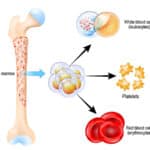

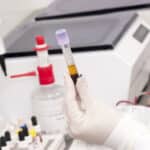



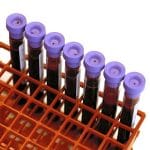

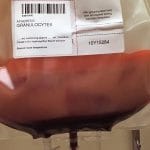
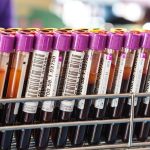
There are at least three possible pathophysiologic mechanisms that might contribute to increased bleeding and mortality from overenthusiastic platelet transfusion, reasoning from the literature and first principles:
(1) ABO non-identical transfusions (not discussed in the NEJM paper) are associated with increased bleeding, ARDS, sepsis and mortality.
Anesth Analg. 2018 Jun;126(6):2135-2138.
Vox Sang. 2011 Jul;101(1):55-60.
Arch Surg. 2010 Sep;145(9):899-906.
(2) Platelet transfusions are pro-inflammatory and pro-thrombotic, with high concentrations of sCD40L correlating with increased post-transfusion fever, lung injury and other adverse events. In addition, inflammation worsens bleeding with thrombocytopenia in an animal model.
Front Immunol. 2015 Feb 2;6:28.
Blood. 2008 May 15;111(10):4958-64.
Transfusion. 2006 Oct;46(10):1813-21.
Blood. 2006 Oct 1;108(7):2455-62.
(3) The doses of platelets (15 ml/kg) are 3-5 times that used in adults, and may contribute to bleeding through simple increases in intravascular pressure (not to mention stressing cardiac, pulmonary and renal function). These doses have never been evidence based and probably are substantially above what is needed for any clinical benefit and quite dangerous to these fragile patients.
Thus, current platelet transfusion practices in this population and in general are neither particularly efficacious and are toxic in ways we know about and have yet to learn about. Platelets are dysfunctional and storage creates a pro-inflammatory product. Whether altered storage conditions, removal of toxic supernatant and/or reduced dosing could improve the benefit to risk ratio are urgent topics for further study.
One additional thought. We have alternatives to products such platelets and plasma, which are associated with poor clinical outcomes in almost all studies. If one wishes to prevent bleeding and mortality, or to treat hemorrhage, there is an inexpensive agent that is proven in randomized trials in a wide variety of clinical settings, namely tranexamic acid. It appears minimally toxic at lower doses and does not predispose to inflammation, thrombosis and mortality as far as we currently know. Perhaps it is time to do randomized trials comparing prophylaxis and treatment of hemorrhage in at risk patients with TXA vs. transfusion? My money would be on TXA as all signs point in that direction. Don’t know of any data in premature newborns, but this would be a good time for neonatologists and pediatric hematologists (not me :)) to consider this approach.
Enthusiasts for platelet transfusion in newborns should read this latest example of how toxic this strategy can be. Very high doses of platelets given. Surprised these infants didn’t all develop congestive heart failure.
Pediatrics. 2019 May;143(5). pii: e20182565. doi: 10.1542/peds.2018-2565. Epub 2019 Apr 2.
Platelet Transfusion for PDA Closure in Preterm Infants: A Randomized Controlled Trial.
Kumar J1, Dutta S2, Sundaram V1, Saini SS1, Sharma RR3, Varma N4.
Author information
Abstract
BACKGROUND AND OBJECTIVES:
Thrombocytopenia is associated with late closure of patent ductus arteriosus (PDA). There are few studies evaluating platelet transfusions to treat PDA. We compared liberal platelet-transfusion criteria (to maintain a platelet count >100 000 per µL) versus standard criteria achieve earlier PDA closure among thrombocytopenic preterm neonates (<35 weeks' gestation) with hemodynamically significant PDA (hs-PDA) presenting within the first 2 weeks of life.
METHODS:
Thrombocytopenic (100 000 per µL by liberally transfusing platelets in preterm thrombocytopenic neonates with hs-PDA does not hasten PDA closure.
This is the key finding:
RESULTS:
Median time to PDA closure was 72 (95% confidence interval [CI] 55.9-88.1) versus 72 (95% CI 45.5-98.4) hours in the liberal versus restrictive transfusion groups, respectively (unadjusted hazard ratio 0.88 [95% CI 0.4-1.9]; P = .697). Despite adjusting for potential confounders, there was no significant difference in time to PDA closure. In the liberal transfusion group, 41% of infants had any grade of intraventricular hemorrhage compared with 4.5% in the restrictive group (P = .009).
since cord blood is used for making cells, can more neonatal platelets be made and transfused back to the neonate?
Packed podcast. I have listened to it a few times to ensure I learn and retain the information. My favourite podcast for my event walk.